O-RAN’s proposed concepts and architectures use a split-RAN concept. There are 8 known ways to functionally split the RAN, and each one proposes splitting the processing so that different parts of the protocol stack process on different hardware.
The below Figure summarizes the eight options.

O-RAN has specified a version of the 7-2 split. The figure below illustrates the 7-2 split, as well as how other parts of the protocol stack are split between the CU and the DU. The 7.2x split is the best balance between bringing this technology to market quickly and deployment cost. It reduces confusion about split specifics while making traffic reduction gains and improvements.
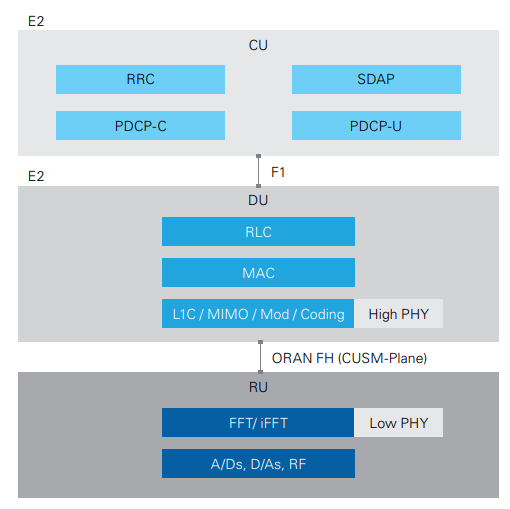
The interface between the DU and RU also is known as the fronthaul (FH) interface. The FH interface, one of the most demanding system interfaces, is very latency-sensitive. Where the DU and RU come from the same manufacturer, most systems use CPRI or eCPRI (5G only) as the FH interface.
Open RAN open fronthaul architecture defines the O-DU and O-RU elements as follows:
- Open RAN Distribution Unit (O-DU) is a logical node hosting RLC/MAC/High-PHY layers based on a lower layer functional split.
- Open RAN Radio Unit (O-RU) is a logical node hosting a Low-PHY layer and RF processing based on a lower layer functional split.
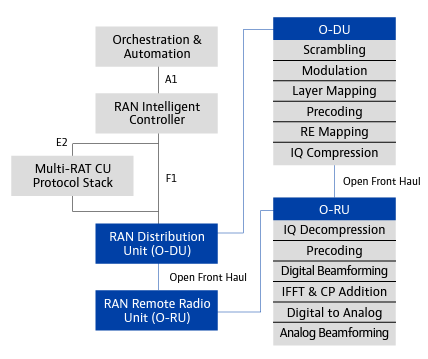
ORAN Fronthaul Protocol Split
The Open Fronthaul includes the Control User Synchronization (CUS) plane and the Management (M) plane over Low Layer Split interfaces. Open RAN defines these interface planes as follows:
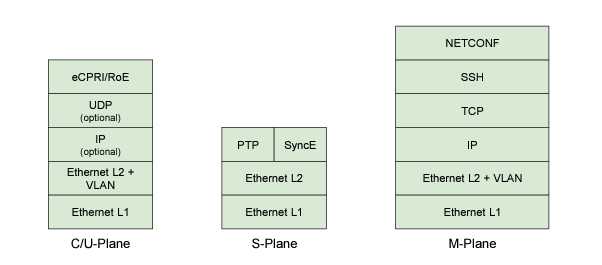
- Control Plane refers to real-time control between O-DU and O-RU, not including the IQ sample data (part of the User Plane).
- Management Plane refers to non-real-time management operations between the O-DU and the O-RU.
- Synchronization Plane refers to traffic between the O-RU or O-DU to a synchronization controller which is generally an IEEE-1588 Grand Master.
- User Plane refers to IQ sample data transferred between O-DU and O-RU.
The Fronthaul C/U Planes
The C-and U-plane Ethernet stack commonly uses a UDP (User Datagram Protocol) to carry eCPRI or RoE. If RoE is selected, it is carried over Ethernet L2 with a VLAN; eCPRI can be carried over Ethernet L2, or UDP. The C- and U-plane both have the highest priority via the VLAN (priority 7) and within the IP layer are defined as Expedited Forwarding.
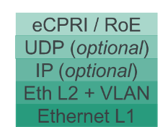
The Fronthaul S Plane
The S-plane Ethernet stack uses Ethernet to carry PTP (Precision Time Protocol) and/or SyncE (Synchronous Ethernet) traffic so that end mobile elements are time-synchronized. In 5G networks, it is very important that each RU, especially RUs in the same segment or adjoining segments (locations where UE (User Equipment) may be in contact with multiple RUs), is time-synchronized, allowing the 5G network to maintain high throughput while downloading data from multiple RUs at once, or while transferring from one RU to another.

The Fronthaul M Plane
The M-plane Ethernet stack uses TCP (Transmission Control Protocol) to carry the management messages between the RU and DU. ORAN defines a NETCONF/YANG profile to be carried over this layer via SSH (Secure Shell), allowing communication between the RU and DU.
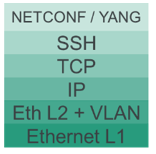
The conclusion for the communication between O-RU and O-DU through the 4 planes is as blow:

